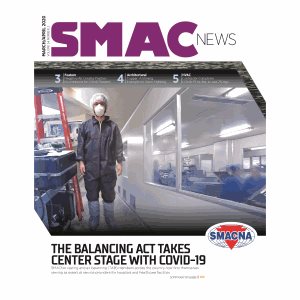Capitol Hill Update: Pension Reform Amid COVID-19 Legislative Frenzy

The COVID-19 pandemic and the resulting health and economic devastation has certainly diverted a lot of attention from the pension issue, but key members of Congress and staff have continued the negotiation process. In fact, there was an effort to get pension relief into the Coronavirus Aid, Relief and Economic Security (CARES) Act.
A majority of Senate Republicans and Democrats appear to support some type of relief for failing multiemployer pension plans which, when they fail, will force the Pension Benefit Guaranty Corporation (PBGC) — the safety net for participants in failed plans — into insolvency itself. However, the two sides need to agree on the depth and degree of a rescue plan, including the amount of federal dollars that would be needed and on the structural reforms wanted by Republicans that they feel are necessary to avoid future plan failures.
Democrats did take a big step when the Health, Education, Labor and Pensions (HELP) Committee Ranking Member Patty Murray’s (D-WA), CARES proposal included a PBGC partitioning plan rather than the House-passed Butch Lewis direct loans to plans. Partitioning is what Republicans proposed in the Grassley-Alexander reform plan in 2019.
Bipartisan agreement is key to getting a final bill, and when agreement on the amount of federal dollars that would go to the PBGC and other key details could not be reached, negotiations stalled. It is not clear whether agreement can be reached in time for pension reform to be included in any upcoming COVID-19 relief bills.
Composite plans continue to be in the discussion but are not driving the process. SMACNA’s job is to let members of Congress know Composite Plan design must be included in any comprehensive pension bill. Too many multiemployer defined benefit plans are unstable and cannot be sustained, especially as we continue to see recurring volatility in the stock market and continue to lose contributing employers.
SMACNA remains active on this issue and encourages every SMACNA member to contact members of both parties in both the Senate and the House to urge pension reform that includes Composite Plan design as a voluntary option for plans. Composites require agreement by labor and management to be implemented. The hybrid design takes the best features of the Defined Benefit (DB) plan model and the Defined Contribution (DC) model for an improved secure retirement option for the future, while also ensuring that no participant would lose benefits from their frozen legacy DB plan.
SMACNA will also be working with the NCCMP and others to secure temporary relief for plans similar to plan relief enacted after the 2008 stock market plunge which allowed plans to temporarily freeze their zone status and curtail the impact of investment losses on actuarial value of assets.
To learn more about the Composite Plan design, visit smacna.org. To contact your congressional representative, visit Contacting Congress online at contactingcongress.org For further information on Pension Policy, contact Dana Thompson, policy specialist in SMACNA’s Capitol Hill office, at dthompson@smacna.org.
Published: March 31, 2020
IN THIS ISSUE
Capitol Hill Update: Pension Reform Amid COVID-19 Legislative Frenzy
Contractor Completes COVID-19 Facility in Just 21 Days
Copper: A Shining Example for Germ Fighting
As scientists look for ways to battle the highly contagious coronavirus directly through vaccines, other researchers are studying copper as as a way to potentially prevent its spread in everyday settings.
Covid-19 Ripple Effects: Turning Crisis into Opportunity
What can we do as construction business owners, post-pandemic, to survive and thrive while the country climbs out of this mess?
Jason Watson Promoted to Executive Director, Labor Relations
Jason Watson has been promoted to executive director of labor relations at SMACNA National effective April 26. He previously served as director of labor relations at SMACNA for more than 15 years.
Mobilizing for the Future: Asset Management
As the world experiences increased uncertainty due to the COVID-19 pandemic, the importance of the construction industry in maintaining a robust civil infrastructure has been heightened.
Negative Air Creates Positive Environment for COVID Patients
As medical facilities deal with an unprecedented influx of patients in the wake of a global pandemic, SMACNA contractors that specialize in negative airflow HVAC system installation and maintenance are in high demand.
President's Column: Together, From A Distance
Showing Up as Your Best Self
Symptoms of a Slowdown?
The spread of a highly contagious virus has forced many industrial SMACNA contractors to adapt to a suddenly uncertain future.
The Balancing Act Takes Center Stage with COVID-19
SMACNA testing and air balancing (TAB) members across the country now find themselves serving as essential service providers for hospitals and healthcare facilities.
Wi-Fi Becoming the Standard for Home Thermostats
The ubiquity of Wi-Fi technology has played a major role in bringing the cost of wireless-networked thermostats down dramatically.


